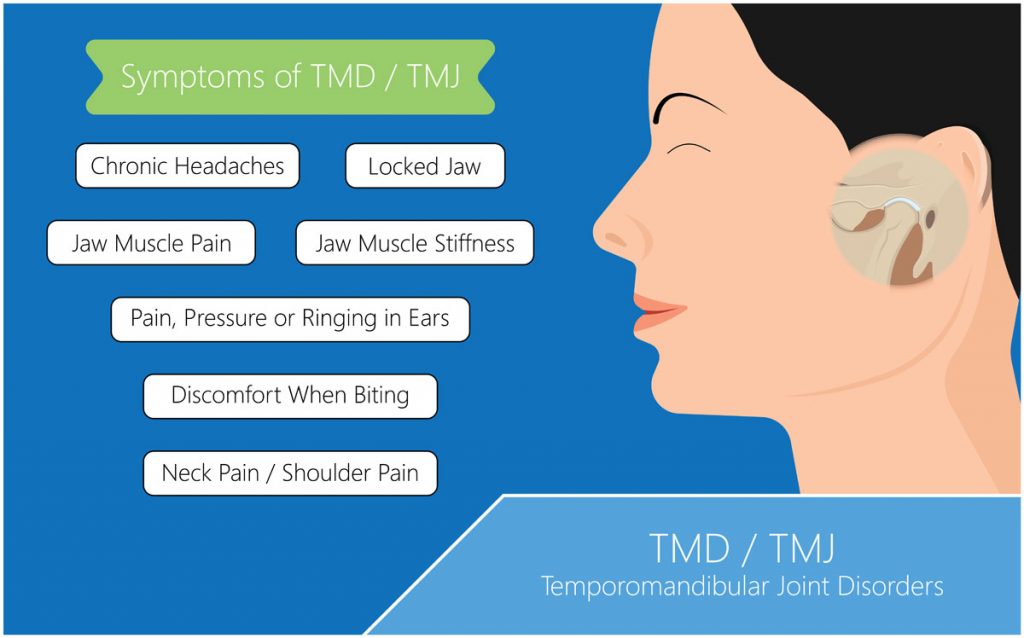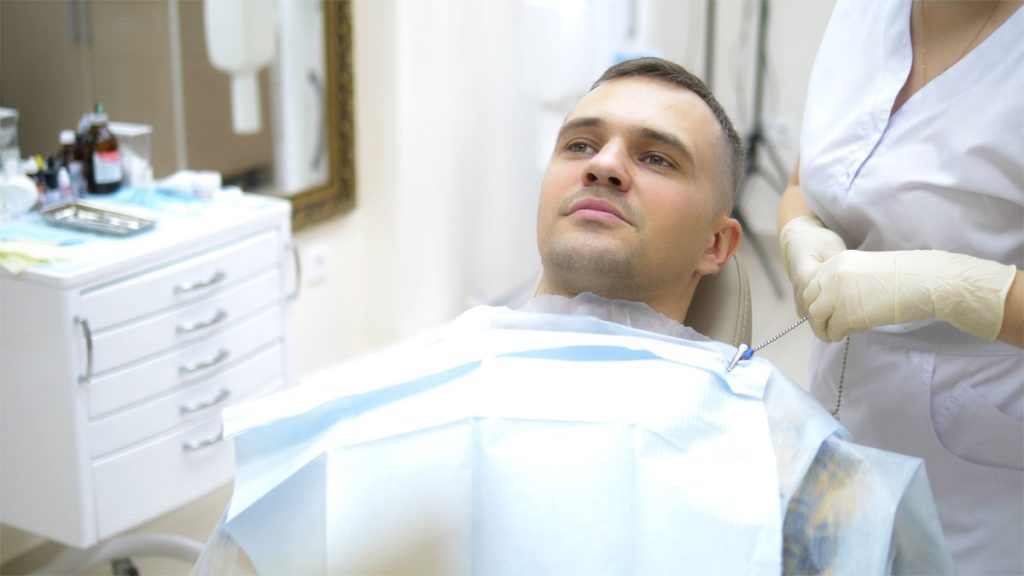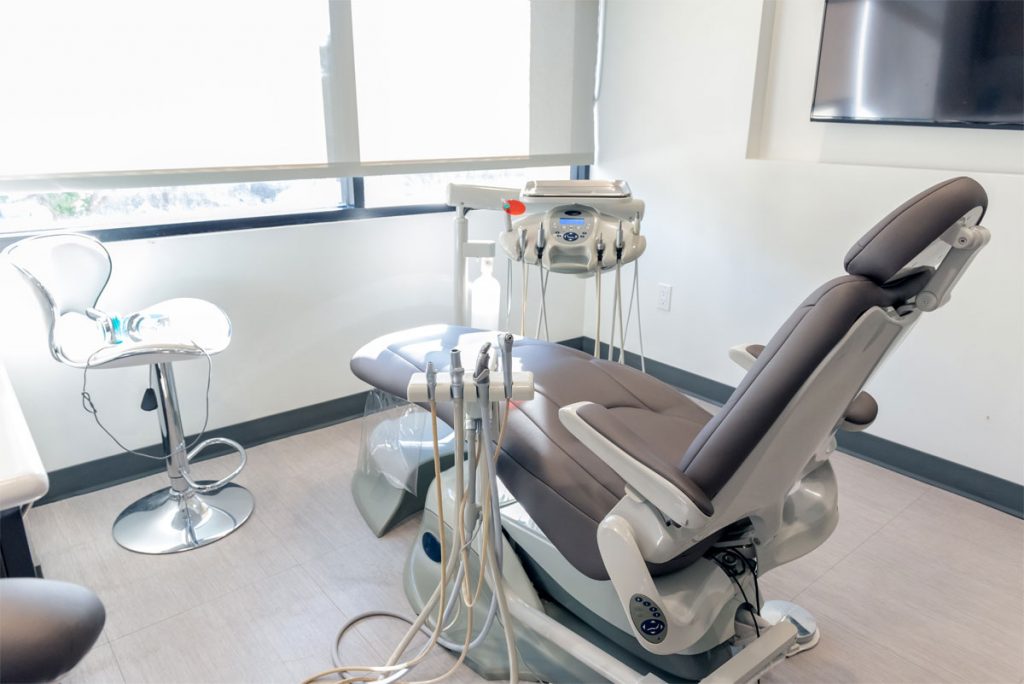Why Choose Neuromuscular Dentistry for TMJ Treatment?
Sometimes, dental problems are unrelated to the gums and teeth. Sometimes, they arise due to the structure of the muscles, bones, and joints that facilitate chewing and speaking.
For example, temporomandibular joint dysfunction, often referred to simply as TMJ, is an uncomfortable and painful condition which affects the joints where a person’s jawbone and temporal bone connect to the skull. TMJ causes pain, swelling, and stiffness that can result in a locked jaw, clicking or popping sounds in the joint, chronic headaches, migraines, neck pain, earaches, malocclusion (improper bite), and difficulty eating and talking.

There are some at-home treatments that can help a person reduce symptoms of TMJ, such as ice packs, massage, and practicing good posture. You can also try to reduce stress and the subsequent clenching or grinding of teeth at night (sleep bruxism), which can aggravate TMJ and its symptoms. For some people, however, at-home therapies simply aren’t enough to address TMJ symptoms.
When a patient’s jawbone and temporomandibular joint are out of alignment, it forces muscles to work extra-hard when eating or speaking. As a result, muscles become overworked, patients experience painful symptoms, and the jaw’s anatomy can even be damaged.

Treating TMJ with Neuromuscular Dentistry
Rather than simply treating symptoms, neuromuscular dentistry seeks to treat the problem at its root by addressing the alignment of the temporomandibular joint. Neuromuscular dentistry uses special techniques to correct the function of the temporomandibular joint and correct malocclusion by moving a patient’s temporomandibular joint into the proper, natural alignment.
How Neuromuscular Dentistry Works
Neuromuscular dentistry uses a treatment called TENS therapy, which delivers small electrical signals to the nerves located in a patient’s jaw. As the nerves are stimulated by small, electrical pulses, the patient’s jaw muscles will relax, allowing the joint and jawbone to move into their natural position, which neuromuscular dentists call the patient’s neuromuscular alignment.
TENS therapy not only provides instant relief from the pain, tension, and stiffness associated with TMJ, but the posture and alignment achieved during TENS therapy reveals the optimal position for a patient’s occlusion and temporomandibular joint.

Once the patient’s neuromuscular alignment has been determined, treatment will be provided to help restore a patient’s occlusion, returning healthy posture to the body. Treatments might include ongoing TENS therapy to address muscle tension and pain, orthotics, orthodontics, and/or restorative dental procedures.
If you suffer from TMJ, we encourage you to contact Dr. Christopher J. Fotinos Cosmetic & General Dentistry to schedule a TMJ and neuromuscular dentistry consultation today.






